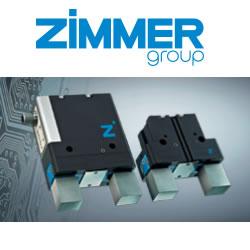The Impact of 5G on Robotics. Robots and 5G.
What is the connection of 5G and robotics? How can mobile robotics boost the inspection and maintenance area? How is 5G facilitating this boost? On 30 and 31 May, Valencia hosted one of the most important events for the 5G industry: V5G DAYS. The theme chosen for this second edition is "5G driving digitalisation".
The aim of this event is to discuss and demonstrate how 5G technology is becoming a key driver for the modernisation of our industry, presenting recent success stories of its implementation both nationally and internationally.
Robotnik, a pioneer in the use of mobile robotics with integrated 5G technology, participated as a sponsor and exhibitor.
What is a 5G robot?
MarÃa BenÃtez, CMO of Robotnik, shared with the V5G attendees one of the use cases within the 5G PILOTS project, in which Robotnik participates together with other partners such as Orange, iTEAM or Huawei.
MarÃa BenÃtez: I want to focus my speech on what we are doing with 5G technology in the mobile robotics sector, our field of activity and, specifically, in inspection and maintenance missions.
At Robotnik we are already launching robots with 5G technology. What does that mean, and what is a 5G robot?
For a long time, inspection and maintenance robots were conditioned by the absence of data networks that allowed communication with low latency or sufficient bandwidth.
The absence of data networks with the necessary characteristics for real telepresence meant that robots had to be provided with a high level of autonomy to perform complex maintenance or inspection operations.
5G technology's rise has enabled new operating schemes, in which the robot can perform a large part of the mission autonomously, but can also be teleoperated in certain circumstances for which it has not been programmed.
The batteries that we use in Robotnik allow an autonomy of 8/10 hours, but the 5G in robotics makes this autonomy increase. This is a great advance for robotic inspection.
Here I show some advantages of 5G in robots focused on inspection and maintenance.
Specific advantages of 5g in inspection robots:
- Ultra-reliable connections
- High bandwidth (guaranteed)
- 35-43 Mbps 4G â†' 400 Mbps-1.8 Gbps 5G
- Video streams, point clouds, etc.
- Remote updates, maintenance
- Low latency (guaranteed)
- Teleoperation and telepresence
- EDGE/CLOUD computing
- Reduced HW cost and battery life
- Other 5G services: security, P2P/V2V
The specific use case I am going to talk about today is the inspection case we are developing in the 5G PILOTS project. This use case has two aspects: the inspection of electrical substation infrastructure and, on the other hand, the inspection of catenary temperature.
The robot we use in this case is the SUMMIT-XL equipped with a thermal camera, lasers and sensors necessary for this application.
The SUMMIT-XL is a versatile and robust AMR capable of moving in different environments both indoors and outdoors, totally optimal for inspection work.
Is, in fact, a 5G robot.
In conclusion, the aim is to automate processes that are mechanical and repetitive. This means that operators can focus on more valuable tasks and their safety is guaranteed. The operator no longer has to physically travel to an environment with dangerous elements, but is in the control centre, supervising the robot or fleet of robots.
In addition, it is intended that this operator can handle the robots intuitively, so in Robotnik we have developed a tool aimed at this: the HMI, with which the end user can have full management and control of your robot.
Featured Product

Zimmer Group - THE PREMIUM GRIPPER NOW WITH IO-LINK
IO-Link is the first standardized IO technology worldwide for communication from the control system to the lowest level of automation.
